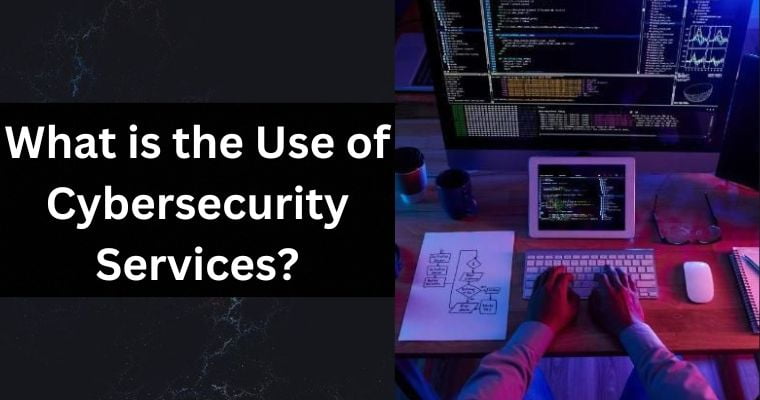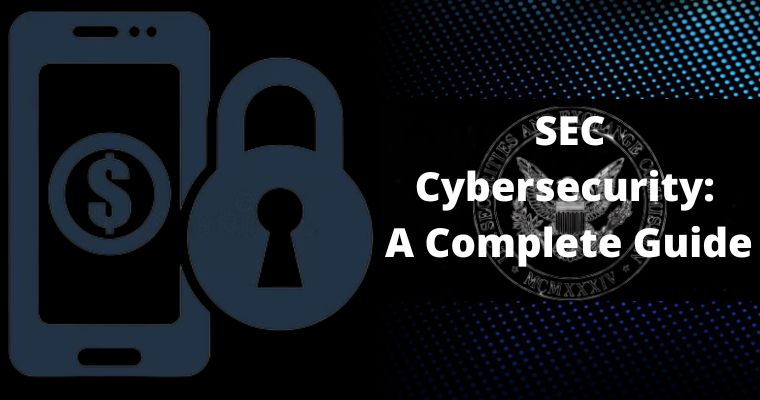Cybersecurity has become a critical concern for Individuals, Businesses & Organisations of all sizes.
With the vast amount of sensitive data being transmitted & stored online, it has become more important than ever to ensure that this information is protected from cyber threats such as hacking, data breaches & other malicious attacks.
In this article, we will explore the many uses & benefits of cybersecurity services. From safeguarding personal information to protecting corporate networks & sensitive data, cybersecurity services are essential for anyone looking to maintain their privacy & security online.
We will discuss the different types of cybersecurity services available, how they work & why they are so important in today’s digital era.
Table of Contents
Uses of Cybersecurity Services
Threat Detection & Prevention
Threat detection & prevention is one of the most critical aspects of cybersecurity services. In today’s digital landscape, cyber threats such as malware, ransomware & phishing attacks are becoming increasingly sophisticated & widespread.
Cybersecurity services provide an essential layer of protection against these threats by detecting & preventing them before they can cause damage.
Cybersecurity services employ various tools & technologies to monitor & protect against threats. These include Firewalls, Intrusion Detection & Prevention Systems [IDPS], Antivirus software & Threat Intelligence Platforms.
These tools work together to identify & block suspicious activity on a network, prevent unauthorized access to sensitive data & detect & remove malware & other malicious software.
One of the most common cyber threats is malware, which refers to any software designed to harm a computer system or steal data. Cybersecurity services use antivirus software to detect & remove malware from a system.
Antivirus software works by scanning a system for known malware signatures & behaviors & blocking any malicious software it detects.
Phishing attacks are another common cyber threat. These attacks typically involve a malicious individual impersonating a trusted individual or Organisation to trick victims into revealing sensitive information such as passwords or credit card numbers.
Cybersecurity services can help prevent phishing attacks by using email filters & other tools to detect & block suspicious emails & other communications.
Intrusion Detection & Prevention Systems [IDPS] are another critical component of cybersecurity services.
These systems monitor network traffic for suspicious activity & can block any unauthorized access attempts. IDPS can also identify & block known threats such as malware & DDoS attacks.
Threat intelligence platforms are yet another tool used by cybersecurity professionals. These platforms provide real-time updates on emerging threats & vulnerabilities, allowing security teams to stay ahead of potential attacks & take proactive measures to protect their networks & data.
Overall, threat detection & prevention is a crucial aspect of cybersecurity services. By employing a variety of tools & technologies, cybersecurity professionals can help protect against a wide range of cyber threats & ensure the safety & security of sensitive data.
Data Protection & Privacy
Cybersecurity services play a vital role in helping organizations protect their sensitive data from cyber threats & ensure compliance with privacy regulations such as GDPR & HIPAA.
Cybersecurity providers offer a range of services to help businesses safeguard their data, such as data encryption, access control & secure data storage.
Data encryption is a common technique used to protect sensitive information from being intercepted or stolen. Encryption algorithms are used to convert data into code that is unreadable to anyone without the proper decryption key.
In addition to these services, cybersecurity providers can assist businesses in achieving compliance with privacy regulations such as GDPR & HIPAA. GDPR requires businesses to protect the personal data of EU citizens & to report any data breaches within 72 hours.
Cybersecurity providers can help businesses implement the necessary measures to comply with GDPR, such as data protection impact assessments, privacy impact assessments & data mapping.
HIPAA, on the other hand, requires healthcare providers to implement security measures to protect the privacy & confidentiality of patient information.
Cybersecurity providers can assist healthcare providers in implementing measures such as access controls, data encryption & network security protocols to ensure compliance with HIPAA.
By partnering with a cybersecurity provider, businesses can proactively protect their data from cyber threats & ensure the safety & privacy of their customers’ information.
Incident Response & Recovery
Despite taking all necessary precautions, cyberattacks can still occur & it is essential for Organisations to be prepared to respond to & recover from such incidents.
Cybersecurity services offer incident response & recovery services to help organizations minimize the impact of security incidents such as data breaches, network outages & other cyber-attacks.
The incident response process typically involves several steps, starting with incident analysis to determine the nature & scope of the incident.
Cybersecurity professionals use various tools & techniques to analyze the incident & identify the source of the problem. This may involve forensic analysis of the affected systems to determine the extent of the damage & identify any vulnerabilities that may have been exploited.
Once the incident has been analyzed, the next step is containment, which involves isolating the affected systems & preventing the incident from spreading further.
Cybersecurity professionals may use techniques such as network segmentation, access controls & data backup & recovery to contain the incident & prevent further damage.
After containment, the focus shifts to recovery & restoration. This involves restoring the affected systems & data to their pre-incident state as quickly as possible.
Cybersecurity professionals use various tools & techniques to restore data from backups, repair any damage to systems & ensure that the network is fully operational.
Finally, cybersecurity professionals conduct a post-incident review to evaluate the incident response process & identify areas for improvement.
This may involve analyzing the effectiveness of incident response procedures, assessing the effectiveness of security controls & identifying any gaps or weaknesses in the Organisation’s security posture.
Cybersecurity services offer various tools & technologies to support incident response & recovery efforts, including Security Information & Event Management [SIEM] tools, Threat Intelligence Platforms & Disaster Recovery Planning.
These tools help Organisations detect & respond to security incidents quickly & efficiently, minimize the impact of such incidents & recover from them as quickly as possible.
Compliance & Risk Management
Compliance & risk management are critical components of cybersecurity services. Cybersecurity providers help Organisations comply with industry regulations & manage their security posture to protect against cyber threats.
Cybersecurity services provide guidance to Organisations on how to comply with industry regulations such as HIPAA, GDPR & PCI-DSS.
Compliance involves implementing the necessary security controls to protect sensitive data & ensure that the Organisation meets the regulatory requirements.
Cybersecurity providers help Organisations assess their compliance posture & develop a roadmap for compliance with the appropriate regulatory frameworks.
In addition to regulatory compliance, cybersecurity services also help Organisations manage their risk posture.
This involves identifying potential risks & implementing controls to minimize those risks. Cybersecurity providers use various frameworks & standards to guide Organisations in managing their risk posture, such as the NIST Cybersecurity Framework & ISO 27001.
The NIST Cybersecurity Framework provides a structured approach to managing cybersecurity risk. The framework consists of five core functions: identity, protect, detect, respond & recover.
Cybersecurity professionals use the framework to identify potential risks, develop policies & procedures to protect against those risks, detect & respond to incidents & recover from any damage caused by incidents.
ISO 27001 is another widely used Standard for information security management. The Standard provides a Framework for implementing an Information Security Management System [ISMS].
The Standard covers a range of security controls, including access control, encryption & incident management.
By following frameworks such as NIST & ISO, cybersecurity professionals help Organisations manage their risk posture & ensure compliance with industry regulations.
These frameworks provide a structured approach to cybersecurity risk management, allowing Organisations to identify potential risks, develop policies & procedures to protect against those risks & recover from any incidents that may occur.
Managed Security Services
Managed Security Services [MSS] refer to the delivery of cybersecurity services through managed services models. This includes Security Operations Centers [SOCs] & Managed Detection & Response [MDR].
These models are becoming increasingly popular as Organisations look for ways to improve their security posture while managing costs.
SOCs are centralized units that provide real-time monitoring, detection & response to security incidents.
They are staffed with security experts who use advanced tools & technologies to identify potential threats & respond to incidents. SOCs are typically used by large Enterprises & Government Organisations with complex security needs.
MDR is a newer model that focuses on proactively identifying & mitigating threats. MDR providers use advanced analytics & machine learning to detect threats that traditional security solutions may miss.
MDR services are often delivered as a subscription-based model, making it an affordable option for Small & Medium-sized Enterprises [SMEs].
Outsourcing cybersecurity to managed service providers has several benefits. Firstly, it is cost-effective. By outsourcing cybersecurity to a managed service provider, Organisations can save money on hardware, software & staffing costs.
Managed service providers can leverage economies of scale to provide cost-effective cybersecurity solutions to their clients.
Secondly, outsourcing cybersecurity to managed service providers provides access to specialized expertise.
Cybersecurity is a complex & rapidly changing field. Managed Service Providers [MSPs] have a team of experienced security experts who are trained to identify & respond to the latest threats.
By partnering with a Managed Service Provider, Organisations can access this expertise & benefit from their experience.
Finally, outsourcing cybersecurity to Managed Service Providers can improve an Organisation’s security posture. Managed Service Providers use advanced tools & technologies to detect & respond to threats quickly.
This can help Organisations mitigate the risk of a security breach & minimize the impact of any incidents that do occur.
Conclusion
In conclusion, cyber security services are essential for Organisations in today’s digital landscape.
In this article, we have explored various uses & benefits of cybersecurity services, including threat detection & prevention, data protection & privacy, incident response & recovery, compliance & risk management & managed security services.
By leveraging cybersecurity services, Organisations can protect their sensitive data, comply with industry regulations, manage risk & mitigate the impact of security incidents.
Furthermore, Managed Security Services provide cost-effective solutions & access to specialized expertise.
It is important for Organisations to evaluate their own cybersecurity needs & consider leveraging cybersecurity services to protect their Organisation.
As the cyber threat landscape continues to evolve, it is crucial to stay ahead of potential threats & protect your Organisation’s assets.




